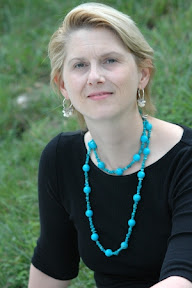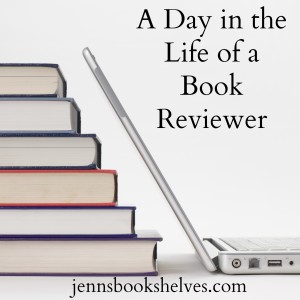Yesterday, I reviewed C.M. Mayo’s The Last Prince of the Mexican Empire. Today I’m pleased to welcome C.M. to my blog today!
 Q: What made you decide to write about this topic?
Q: What made you decide to write about this topic?
A: I was so surprised to learn that the mother of the prince of the title– Agustin de Iturbide y Green (1863-1925) was an American. I am also an American married to a Mexican, one very distantly related to her mother-in-law, so I was curious to learn more about her, how she came to Mexico and what made her agree, at first, to collaborate with Maximilian von Habsburg. When I started to delve into reading about the period and about her, however, I quickly found so many contradictions, mysterious distortions and vagueness, that I realized her story, and that of her son, had never been properly researched. I also felt it is an important story, for both Mexicans and Americans.
suggested links:
Q: On your web site, you write about how difficult it was to make the leap to writing “serious fiction.” What happened that allowed you to make the leap from writing non-fiction?
A: I made an effort to learn the craft of fiction through taking workshops, reading books on craft, and then re-reading novels, not as consumer wanting to be entertained, but as as a fellow craftsman, actively noting, for example, how does Chekhov describe the snow? Or Tolstoy, a dress? Lampedusa, a dance? Flaubert, a sense of joy or despair? How do they handle dialogue, transitions, building suspense? And so on. It was really as simple– and as difficult— as that.
Suggested link:
Q: Describe your writing routine: Do you write at a particular time of day? Particular setting? Is there anything you have to have in order to write (music playing in the background, complete silence, special socks?)
A: I’m not big on routines. I do make use of music, and I find soundwork fascinating. I can heartily recommend Don Campbell’s CD set, “The Power and Sound of Music” and Joshua Leed’s book, Sonic Alchemy: Conversations with Leading Sound Practioners.
Q: What sort of books do you like to read in your spare time?
Now that the novel is out I have been reading mostly literary nonfiction, or “creative nonfiction,” as it’s often called, and what interests me, now that I think about, is all over the map, both literally and figuratively. Recent reads include Finding Iris Chang by Paula Kamen; The Big Short by Michael Lewis; Cognitive Surplus by Clive Shirky; and The Permit That Never Expires by Philip Garrison. I love recommending books: a good one is too much of a treasure to keep to oneself! I keep a list of my annual top 10, as well as other reviews here:
http://www.cmmayo.com/pubs-bookrev-home.html
Q: What author (alive or dead) would cause you to go speechless, should you meet them in person?
I think I could manage to croak out a “hello,” for just about anybody. I might go speechless if they shot purple stars out of their nostrils, or something like that. I don’t mean to be flip. I think I have an unusual sense of groundedness about the famous, wealthy, powerful, unusually accomplished, etc, because my novel is stocked with a large cast of precisely such characters. I had to live with the likes of Maximilian von Hasburg and John Bigelow for so many years, I couldn’t help but notice that they are, after all, human. And we are all, whether we realize it or not, connected to one another.
Q: Are there any authors who have influenced your writing?
A: For this novel, the most influential were Guiseppi di Lampedusa, whose richly splendid novel, The Leopard, covers a similar period in Sicily. For the flexible narrative voice and language I learned from Henry James’s Portrait of A Lady and Edith Wharton’s The Custom of the Country and for structure, her tragic novel The House of Mirth. Contemporary influences include A. Manette Ansay, Kate Braverman, Bruce Chatwin, Ted Conover, Douglas Glover, V.S. Naipaul, and oh, so many others. Everyone in Mexico asks me if I’ve read Fernando del Paso’s Noticias del Imperio. The answer is, other than a very few pages which I translated for my anthology, Mexico: A Traveler’s Literary Companion, no, and not because I am unaware that it is considered one of Mexico’s greatest novels. Del Paso covers the same period and many of the same characters, and I wanted to have a clear consience that my novel is my own. So now I have to read it!
Q: Fondest book tour moment?
A: For me the best part of a book tour is meeting other writers and historians. Tony Arthur showed up at my reading at Vroman’s in Pasadena. He and I had been corresponding via e-mail for time about our research. He was then working on a book about General Shelby and the other Confederates who came to Mexico during Maximilian’s reign. Tony had recently been diagnosed with cancer and so I can only imagine what an effort it must have been for him to come to the reading. He passed away recently; I was so glad to have had the chance, however briefly, to have met him in person.
That concludes the “official” part of the interview. As typical, I asked C.M. for a picture of her favorite spot to read or relaxed. Following is a picture taken of the view from her desk, with muse, Picadou (her pug).
Now, on to the giveaway! One lucky individual will win a copy of The Last Prince of the Mexican Empire. To enter, please fill out the form below. Open to US & Canadian residents only, please. The winner will be announced on Friday, November 19th. Good luck to all who enter!







2 Responses to Interview & Giveaway: C.M. Mayo, Author of The Last Prince of the Mexican Empire